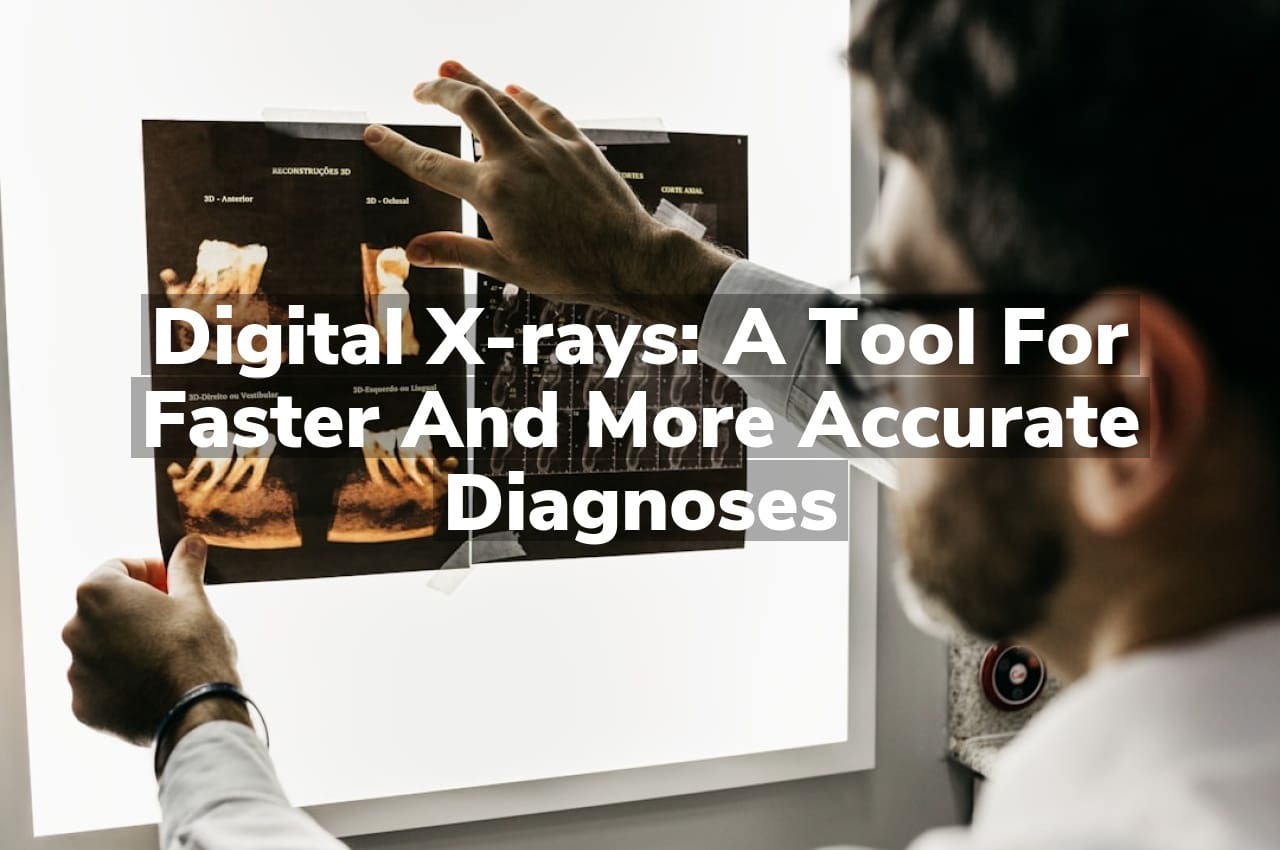Have you ever wondered how digital X-rays are revolutionizing the field of medical diagnostics? These advanced imaging tools provide clearer, more detailed views of the internal structures of the body, allowing healthcare professionals to make faster and more accurate diagnoses. This technology enhances the ability to quickly assess and address various medical conditions, improving patient care outcomes.
Advances in Digital X-ray Technology
Digital X-ray technology has seen significant advancements over the years, enhancing the capabilities of medical professionals in diagnosing and treating various conditions. These improvements have not only increased the clarity and detail of images but also significantly reduced the time required to obtain and process these images. As a result, healthcare providers can offer quicker diagnoses, which is crucial in emergency situations or when dealing with progressive diseases.
For a deeper understanding of how these technological enhancements impact healthcare, consider exploring The Future of Medical Imaging: Advancements in Digital X-rays. This exploration highlights the integration of sophisticated algorithms and enhanced imaging software, which are pivotal in transforming patient outcomes by providing clearer, more precise images. These advancements contribute to a broader shift towards more efficient and effective medical imaging practices globally.
Comparing Radiation Doses: Traditional vs. Digital X-rays
When discussing the evolution of diagnostic tools in the medical field, a significant point of comparison is the radiation dose associated with traditional X-rays versus digital X-rays. Traditional X-rays, which have been used for decades, utilize film and chemicals to capture images, requiring higher levels of radiation to produce a clear picture. In contrast, digital X-rays employ advanced digital sensors that are more sensitive to radiation. This sensitivity allows for a much lower radiation dose to achieve the same, if not better, image quality.
The shift from traditional to digital X-ray technology marks a pivotal development in minimizing patient exposure to radiation. While both methods serve the fundamental purpose of internal visualization, the reduced radiation dose associated with digital X-rays aligns with ongoing efforts to enhance patient safety in medical diagnostics. For those interested in exploring this technology further, consider visiting Lincolnton Digital X-Rays Near You.
Safety Protocols for Digital X-ray Use
In the realm of medical imaging, digital X-rays stand out for their role in enhancing diagnostic precision and expediting patient care. However, the use of this technology is governed by stringent safety protocols to ensure the well-being of both patients and healthcare providers. These protocols encompass a range of measures designed to minimize exposure to radiation, which is a fundamental concern associated with all types of radiographic imaging. Regulatory bodies set forth guidelines that facilities must adhere to, which include routine maintenance checks of the equipment and mandatory training for all personnel operating the machines. Ensuring compliance with these safety standards is crucial for maintaining the integrity of the diagnostic process while safeguarding health.
Patient Education on Radiation Risks
Understanding the risks associated with radiation is crucial for patients considering or undergoing digital X-ray procedures. While digital X-rays generally expose patients to lower levels of radiation compared to traditional X-ray methods, it is important for patients to be aware of the inherent risks that any exposure to radiation might carry. Healthcare providers typically ensure that the minimum amount of radiation is used to achieve the necessary diagnostic results, thereby adhering to the principle of ALARA (As Low As Reasonably Achievable). Awareness and understanding of these factors can help patients feel more informed about their healthcare choices.
For those seeking further information, consider consulting with professionals like those at Lincolnton Pediatric Dentist, known as Alpine Pediatric Dentistry, who prioritize patient safety and education.
Future Trends in Medical Imaging Technology
As medical imaging technology advances, the focus on reducing radiation exposure continues to drive innovation. Future trends are likely to include the development of more sophisticated digital X-ray systems that utilize AI and machine learning algorithms to enhance image quality while minimizing radiation doses. Additionally, we can expect the emergence of new imaging modalities that blend different technologies, such as combining X-rays with ultrasound or MRI, to reduce reliance on high-radiation techniques. These advancements not only aim to improve diagnostic accuracy but also prioritize patient safety, ensuring that medical imaging remains a vital, yet safer, tool in healthcare diagnostics.
Conclusion
For further inquiries, please call us at (704) 479-6777 or read our reviews on Google Maps.





